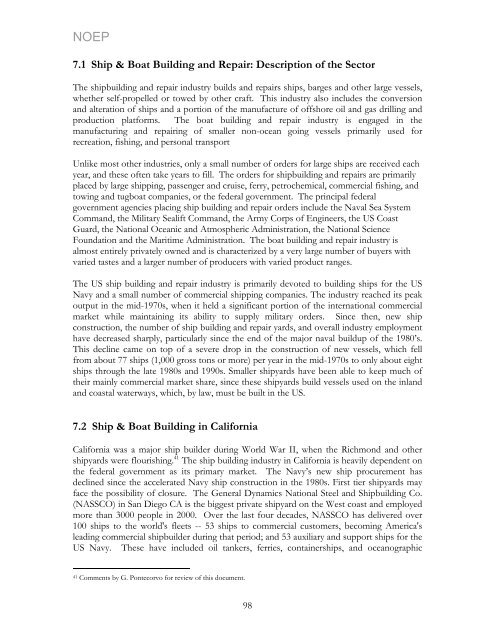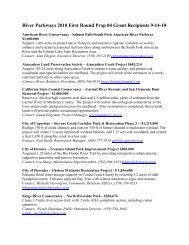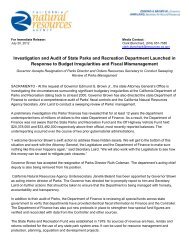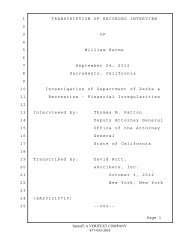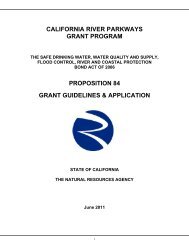California's Ocean Economy - California Resources Agency - State ...
California's Ocean Economy - California Resources Agency - State ...
California's Ocean Economy - California Resources Agency - State ...
Create successful ePaper yourself
Turn your PDF publications into a flip-book with our unique Google optimized e-Paper software.
NOEP<br />
7.1 Ship & Boat Building and Repair: Description of the Sector<br />
The shipbuilding and repair industry builds and repairs ships, barges and other large vessels,<br />
whether self-propelled or towed by other craft. This industry also includes the conversion<br />
and alteration of ships and a portion of the manufacture of offshore oil and gas drilling and<br />
production platforms. The boat building and repair industry is engaged in the<br />
manufacturing and repairing of smaller non-ocean going vessels primarily used for<br />
recreation, fishing, and personal transport<br />
Unlike most other industries, only a small number of orders for large ships are received each<br />
year, and these often take years to fill. The orders for shipbuilding and repairs are primarily<br />
placed by large shipping, passenger and cruise, ferry, petrochemical, commercial fishing, and<br />
towing and tugboat companies, or the federal government. The principal federal<br />
government agencies placing ship building and repair orders include the Naval Sea System<br />
Command, the Military Sealift Command, the Army Corps of Engineers, the US Coast<br />
Guard, the National <strong>Ocean</strong>ic and Atmospheric Administration, the National Science<br />
Foundation and the Maritime Administration. The boat building and repair industry is<br />
almost entirely privately owned and is characterized by a very large number of buyers with<br />
varied tastes and a larger number of producers with varied product ranges.<br />
The US ship building and repair industry is primarily devoted to building ships for the US<br />
Navy and a small number of commercial shipping companies. The industry reached its peak<br />
output in the mid-1970s, when it held a significant portion of the international commercial<br />
market while maintaining its ability to supply military orders. Since then, new ship<br />
construction, the number of ship building and repair yards, and overall industry employment<br />
have decreased sharply, particularly since the end of the major naval buildup of the 1980’s.<br />
This decline came on top of a severe drop in the construction of new vessels, which fell<br />
from about 77 ships (1,000 gross tons or more) per year in the mid-1970s to only about eight<br />
ships through the late 1980s and 1990s. Smaller shipyards have been able to keep much of<br />
their mainly commercial market share, since these shipyards build vessels used on the inland<br />
and coastal waterways, which, by law, must be built in the US.<br />
7.2 Ship & Boat Building in <strong>California</strong><br />
<strong>California</strong> was a major ship builder during World War II, when the Richmond and other<br />
shipyards were flourishing. 41 The ship building industry in <strong>California</strong> is heavily dependent on<br />
the federal government as its primary market. The Navy’s new ship procurement has<br />
declined since the accelerated Navy ship construction in the 1980s. First tier shipyards may<br />
face the possibility of closure. The General Dynamics National Steel and Shipbuilding Co.<br />
(NASSCO) in San Diego CA is the biggest private shipyard on the West coast and employed<br />
more than 3000 people in 2000. Over the last four decades, NASSCO has delivered over<br />
100 ships to the world's fleets -- 53 ships to commercial customers, becoming America's<br />
leading commercial shipbuilder during that period; and 53 auxiliary and support ships for the<br />
US Navy. These have included oil tankers, ferries, containerships, and oceanographic<br />
41 Comments by G. Pontecorvo for review of this document.<br />
98


